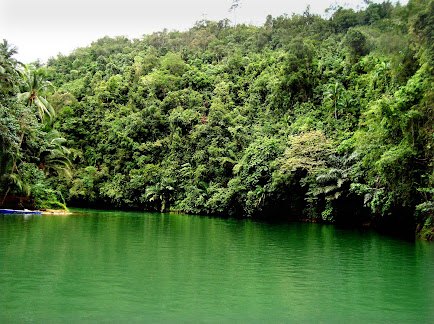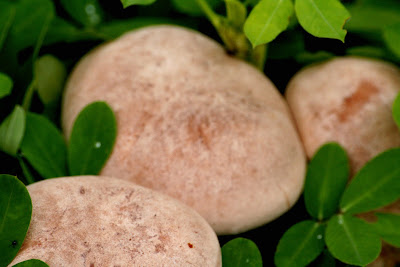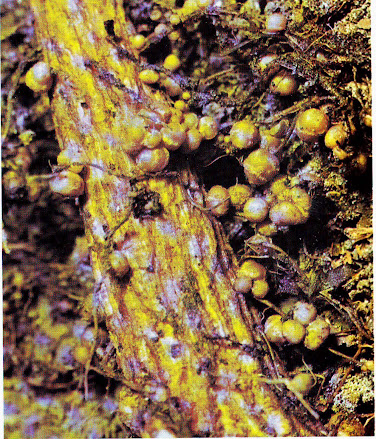Are you a Guardian of the Environment?
(Apostles for the Environment)
Dr Abe V Rotor

Heritage tree - abode of biodiversity, painting in acrylic by the author
18. When there are farms and fishponds neglected or abandoned, find out how these are put back to their productive conditions, or converted into a wildlife sanctuary.
19. When at rest or in confinement for health reason, explore natural remedies with herbals, through pet therapy, aromatherapy, and other proven remedies, in consultation with your doctor.
20. When in doubt if civilization is disguised evil, which is the root of war, poverty, environmental degradation, and the like, remember that it is also civilization that is responsible in building the great institutions of mankind, so that it is the obligation of each member of society to maintain the integrity of these institutions – indeed a noble mission to lead.
21. When appreciating the vastness of creation such as the seas, valleys, mountains, and entertain the idea that their resources are unlimited, view these in their microcosm like a pond or hill - for what can happen to this minuscule could be the same on a larger scale and proportion – be the prophet, but not of doom.
22. When you shall have found success in scholarship, wealth, power, family, etc., the task of integrating all these for the purpose of sharing with those in dire need, and for posterity and sustainability, becomes a greater challenge, indeed this is the price of success.
23. When devoting your time and energy and talents to the service of community and environment as dictated by your profession and as a good citizen, do not neglect your obligation to yourself and family, and by so doing, build a model on which you are looked up to by those you serve.
24. When hope dims in this troubled world, with continued disregard to protect Mother Earth, human abuse and indifference in pursuit of economic gains and affluence, violation of order and harmony of society, degradation of values, “don’t go gentle into the night” – be the sentinel ever vigilant, the guardian ever righteous, for opportunity awaits you in your greatest hour.
25. When on a fine Sunday morning you hear birds in the trees, fish splashing in a pond, and plants blooming, say a prayer of praise and thanksgiving in music and verse, painting, or simply through reflection of the magnificence of creation. ~
(Apostles for the Environment)
Dr Abe V Rotor

Heritage tree - abode of biodiversity, painting in acrylic by the author
(2 ft x 4 ft) 2021 Author's residence San Vicente, Ilocos Sur
1. When spring comes without stir, “don't go gentle into the night,” rise and find out where have all the birds gone that herald the new season, and the new beginning of life.
2. When the monsoon ends too soon, summer sets early, the land scorched, the rivers and ponds dried up, warn of the coming of a severe El Niño, a cyclical phenomenon.
3. When algal bloom in make-believe proportion spreads in lakes, sound the alarm of fish kill coming in order to avert losses and hunger, and to save the ecosystem.
4. When people move to cities in exodus, convince them, advise government, it is a tender trap that takes them away from the real Good Life on the countryside.
5. When clouds simply pass over the landscape, take the lead to reforest the hills and mountains, restore the watershed with a million and one trees.
6. When flood sweeps the land taking with it lives and properties, and eroding soil fertility, be part of rehabilitation and planning; believe that flood can be tamed.
7. When you find an abundance of lichens of different types on trees and rocks, and fireflies at night, assure residents of the pristine condition of their environment, and help them in preserving it.
8. When and where wildlife areas are shrinking, backyards and idle lots can be developed as alternative wildlife sanctuary, initiate this as a community project.
9. When asked what vegetables are safe from pesticide residues and chemicals from fertilizers, promote native species like malunggay, kamote tops, gabi, saluyot, and the like, they are also more nutritious and easy to grow. And promote natural or organic farming, too.
10. When asked of Nature's way of maintaining the ecosystem, explain the role of nitrogen-fixing microorganisms, composting, symbiosis, and the like. These natural processes and cycles have been taking place even before the arrival of the human species.
11. When additives are found in food - MSG, NutraSweet or any artificial sugar, salitre in sausage, sulfite in white sugar, melamine in milk, formalin in fish, warn the public against taking these, initiate through legislation and campaign to ban these additives.
12. When children spend too much time before the TV, on computers, and other gadgets, offer alternatives more favorable to their upbringing and well-being by getting close to nature like camping, gardening and other outdoor activities.
13. When old folks talk about traditional wisdom and values, demonstrate native skills, listen and translate them into useful applications, disseminate these in school and through extension.
14. When animals are restless, reptiles and rodents coming out of their burrows and dens, fish attempting to escape, fowls noisy, suspect the coming of a force majeure such as earthquake. Be alert to face possible consequences, and to extend assistance.
15. When epidemic threatens an area, say bird flu, hepatitis, dengue, cholera, initiate community cooperation with health and other institutions to arrest the spread of these diseases.
2. When the monsoon ends too soon, summer sets early, the land scorched, the rivers and ponds dried up, warn of the coming of a severe El Niño, a cyclical phenomenon.
3. When algal bloom in make-believe proportion spreads in lakes, sound the alarm of fish kill coming in order to avert losses and hunger, and to save the ecosystem.
4. When people move to cities in exodus, convince them, advise government, it is a tender trap that takes them away from the real Good Life on the countryside.
5. When clouds simply pass over the landscape, take the lead to reforest the hills and mountains, restore the watershed with a million and one trees.
6. When flood sweeps the land taking with it lives and properties, and eroding soil fertility, be part of rehabilitation and planning; believe that flood can be tamed.
7. When you find an abundance of lichens of different types on trees and rocks, and fireflies at night, assure residents of the pristine condition of their environment, and help them in preserving it.
8. When and where wildlife areas are shrinking, backyards and idle lots can be developed as alternative wildlife sanctuary, initiate this as a community project.
9. When asked what vegetables are safe from pesticide residues and chemicals from fertilizers, promote native species like malunggay, kamote tops, gabi, saluyot, and the like, they are also more nutritious and easy to grow. And promote natural or organic farming, too.
10. When asked of Nature's way of maintaining the ecosystem, explain the role of nitrogen-fixing microorganisms, composting, symbiosis, and the like. These natural processes and cycles have been taking place even before the arrival of the human species.
11. When additives are found in food - MSG, NutraSweet or any artificial sugar, salitre in sausage, sulfite in white sugar, melamine in milk, formalin in fish, warn the public against taking these, initiate through legislation and campaign to ban these additives.
12. When children spend too much time before the TV, on computers, and other gadgets, offer alternatives more favorable to their upbringing and well-being by getting close to nature like camping, gardening and other outdoor activities.
13. When old folks talk about traditional wisdom and values, demonstrate native skills, listen and translate them into useful applications, disseminate these in school and through extension.
14. When animals are restless, reptiles and rodents coming out of their burrows and dens, fish attempting to escape, fowls noisy, suspect the coming of a force majeure such as earthquake. Be alert to face possible consequences, and to extend assistance.
15. When epidemic threatens an area, say bird flu, hepatitis, dengue, cholera, initiate community cooperation with health and other institutions to arrest the spread of these diseases.
16. When a child has little concern about the environment, teach him, guide him to explore the beautiful world of nature, and make him realize his importance and his role in maintaining a balanced environment.
17. When there is a worthy movement to save the environment, such as Clean and Green, Piso sa Pasig, or any local campaign, lead and extend your full support.
17. When there is a worthy movement to save the environment, such as Clean and Green, Piso sa Pasig, or any local campaign, lead and extend your full support.
19. When at rest or in confinement for health reason, explore natural remedies with herbals, through pet therapy, aromatherapy, and other proven remedies, in consultation with your doctor.
20. When in doubt if civilization is disguised evil, which is the root of war, poverty, environmental degradation, and the like, remember that it is also civilization that is responsible in building the great institutions of mankind, so that it is the obligation of each member of society to maintain the integrity of these institutions – indeed a noble mission to lead.

21. When appreciating the vastness of creation such as the seas, valleys, mountains, and entertain the idea that their resources are unlimited, view these in their microcosm like a pond or hill - for what can happen to this minuscule could be the same on a larger scale and proportion – be the prophet, but not of doom.
Treetop, detail of above painting
23. When devoting your time and energy and talents to the service of community and environment as dictated by your profession and as a good citizen, do not neglect your obligation to yourself and family, and by so doing, build a model on which you are looked up to by those you serve.
24. When hope dims in this troubled world, with continued disregard to protect Mother Earth, human abuse and indifference in pursuit of economic gains and affluence, violation of order and harmony of society, degradation of values, “don’t go gentle into the night” – be the sentinel ever vigilant, the guardian ever righteous, for opportunity awaits you in your greatest hour.
25. When on a fine Sunday morning you hear birds in the trees, fish splashing in a pond, and plants blooming, say a prayer of praise and thanksgiving in music and verse, painting, or simply through reflection of the magnificence of creation. ~






















.jpg)





















